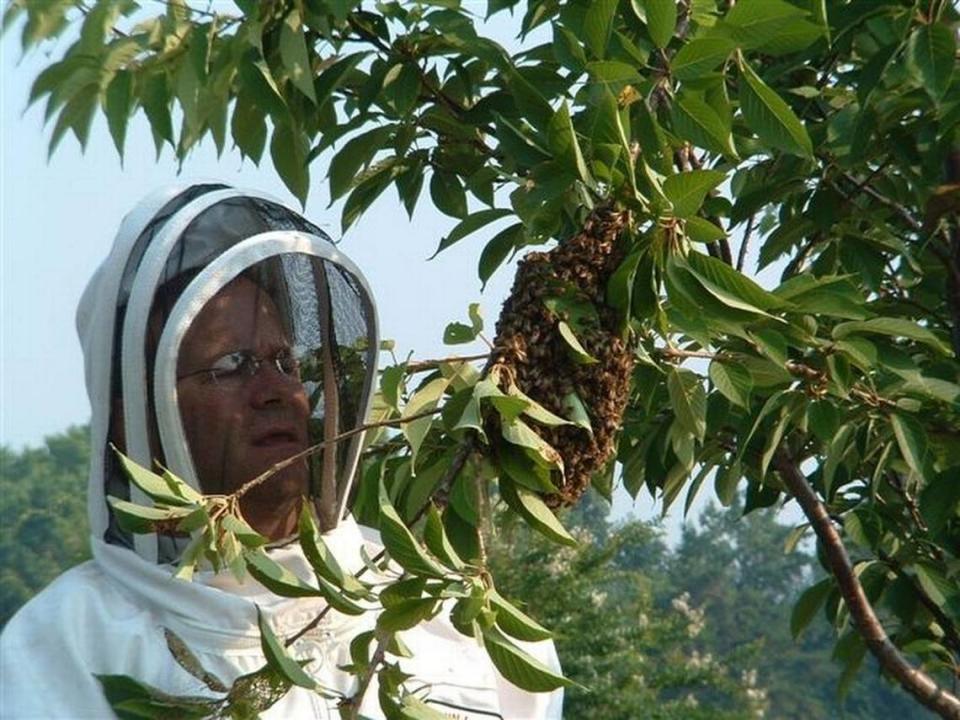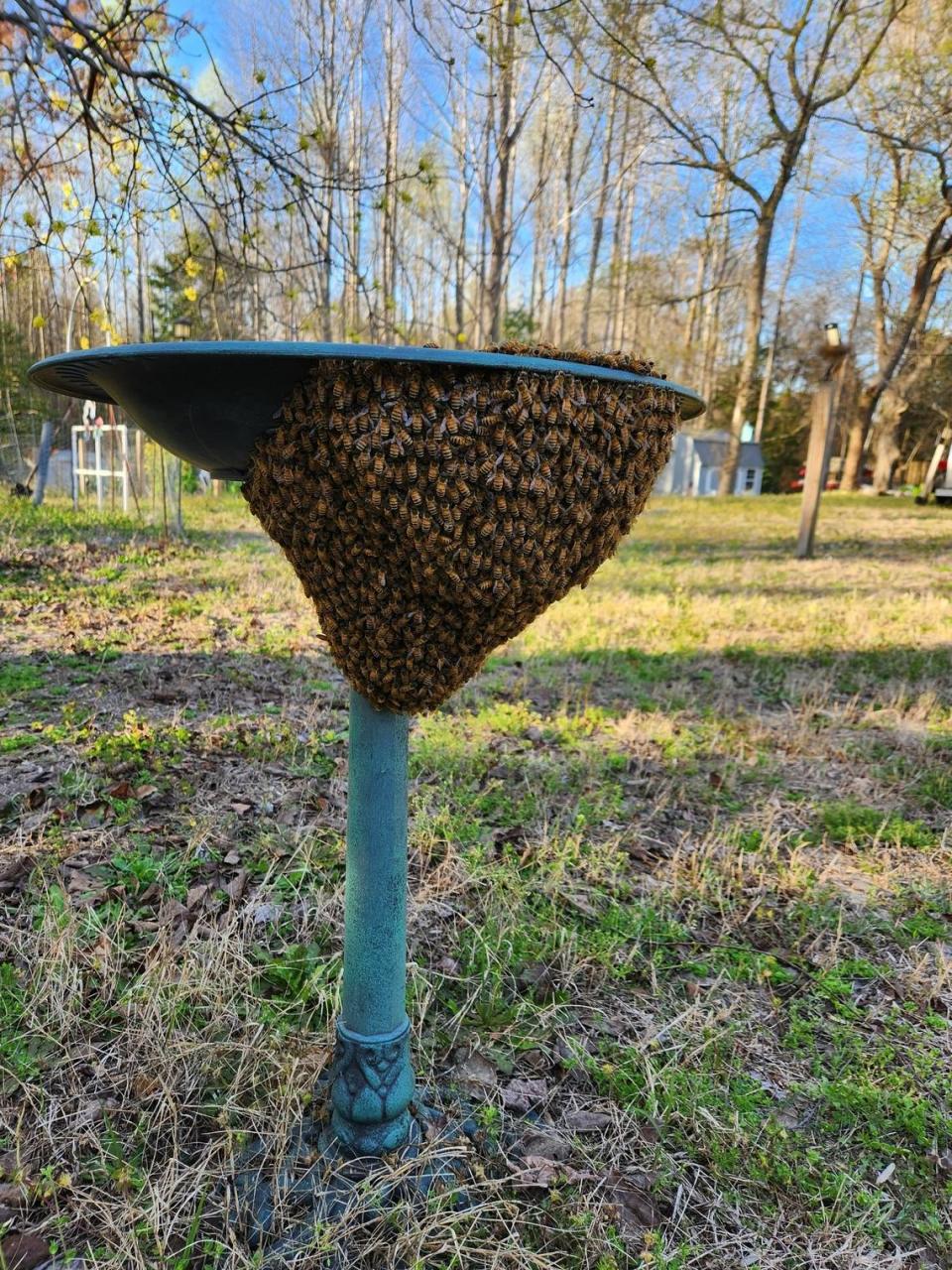Honey bee swarms can look scary, but don’t freak out. What to do if you see one
Spring is here, and along with the warmer weather comes honey bee swarms.
That means you may notice large groups of honey bees near your home this season and into the summer, as the insects search for new locations to establish their hives. The sight might be scary or seem threatening — but rest assured, it’s generally not — and you may be left wondering what action to take.
To learn more about swarming season and how to safely and properly handle a swarm near you, we spoke with Jennifer Keller, lead beekeeper for N.C. State University’s apiculture — or beekeeping — program. We also consulted information from the Jackson County Cooperative Extension office online.
Here’s what we learned.
What is a honey bee swarm?
A honey bee swarm occurs when a bee hive or colony becomes too populated and crowded, and some bees break away from the hive to establish a new colony elsewhere.
“At some point, they outgrow their hive, or tree or whatever they’re in,” Keller said. “Things become crowded, and then there’s this sense of, ‘We’re getting too crowded, we need to split.’”
About half to two-thirds of the hive’s worker bees and the hive’s queen bee will split away from the hive, leaving to go establish a new hive, Keller said. A new queen bee will emerge at the original hive, and that hive will continue to exist in its original location.
The group of bees that splits away from the original hive will begin searching for a new location to make their permanent hive, but in the meantime, they will look for a place to occupy temporarily — creating the swarms you may see in your yard.
“It’s a temporary landing, usually nearby to where the original hive colony was,” Keller said.
While bees commonly swarm on tree limbs, they can swarm on nearly anything, from picnic tables to fence posts to bird houses, Keller said.
Once they’ve swarmed, the colony will send scout bees out to look for a permanent hive location, which will likely be in a cavity of some sort, such as a hollowed out tree, Keller said. When the colony selects a new location, the bees will leave the swarm to take up residence at their new permanent home.
The process to find a new hive location may take a few hours or up to a few days, Keller said.

When is honey bee swarm season in North Carolina?
Keller said honey bees will generally swarm in the spring season, but it depends on temperatures and weather.
This year, for instance, when North Carolina and the Triangle, specifically, experienced an unseasonably warm February, swarming started earlier than normal.
The swarming season will last through spring and into early summer, with most activity starting “in the warmer hours of the day,” Jackson County Cooperative Extension wrote in 2019.
Are swarming honey bees dangerous?
If you see a honey bee swarm in your yard or near your home, it may look scary or threatening. But you should know that swarming bees generally are not dangerous and do not pose a risk, Keller said.
That’s because the swarms are a temporary location for the colony and they haven’t established their new hive — meaning they don’t have anything to protect or defend, Keller said.
The bees also tend to feed and gorge on honey prior to swarming, “which reduces their ability to sting,” Jackson County Cooperative Extension wrote.
“There’s nothing to be scared of,” Keller said. “They’re not going to come attack you or anything like that. They’re just looking for a new location.”
Still, you should avoid disturbing the swarm and keep a safe distance, Jackson County Cooperative Extension recommends.

How can I have a honey bee swarm properly removed?
If you would like the honey bee swarm removed from your property, it’s best to contact your local N.C. Cooperative Extension office. Keller said these offices tend to keep lists of local beekeepers who may be interested or willing to come to your property and relocate the swarm.
“Usually beekeepers are quite happy to come get these for you,” Keller said. “That’s essentially a free bee hive right there for them.”
If a swarm is located at a safe distance away from your home or yard, you could choose to leave the swarm alone and not have it relocated. The swarm will generally move on to their new, permanent hive location within a few days.
But Keller recommended contacting your local extension office and getting the hive removed anyway, as bees “typically have trouble now than ever before” existing on their own in the wild, due to pests in that environment.
You can find your local extension office by clicking on “County Centers” at the top right of the main N.C. Cooperative Extension website: ces.ncsu.edu.

 Yahoo Movies
Yahoo Movies 
